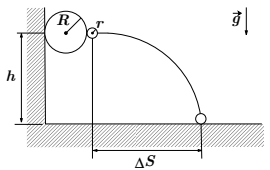Questões Militares
Comentadas para ita
Foram encontradas 133 questões
Resolva questões gratuitamente!
Junte-se a mais de 4 milhões de concurseiros!
Há pouco leite no país, é preciso entregá-lo cedo. Há muita sede no país, é preciso entregá-lo cedo. Há no país uma legenda, que ladrão se mata com tiro.
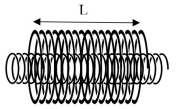

em que B = 1,00 T, Ex = 100 N/C e Ez = 800 N/C. O eixo z corresponde à direção vertical para cima. Sabendo que a partícula partiu da origem do sistema de coordenada com velocidade ~v, escrita em termos de suas componentes paralela e perpendicular a
 , ou seja,
, ou seja,  , sendo
, sendo  2,0 m/s e
2,0 m/s e  = 1,0 m/s, calcule o tempo necessário
para ela atingir a posição z = 1,0 m.
= 1,0 m/s, calcule o tempo necessário
para ela atingir a posição z = 1,0 m. I. Para gerar um espectro sonoro dessa natureza é necessário acionar 5 teclas do piano.
II. A velocidade de propagação de cada nota no ar é proporcional à sua frequência característica.
III. A frequência fundamental da corda, sujeita a uma tensão T, é inversamente proporcional `a sua densidade linear de massa.
Assinale a alternativa correta.
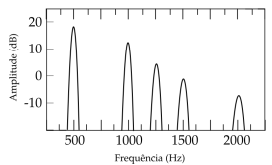

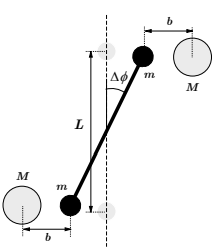
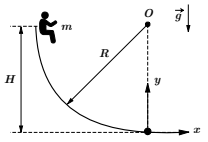
Notações
ℕ = {1, 2, 3, . . . }: o conjunto dos números naturais.
ℝ : o conjunto dos números reais.
ℂ : o conjunto dos números complexos.
i : unidade imaginária, i2 = −1.
: segmento de reta de extremidades nos pontos A e B.
: ângulo formado pelos segmentos
e
, com vértice no ponto O.
m() : medida do segmento
.
Observação: Os sistemas de coordenadas considerados são os cartesianos retangulares.
Seja ABCD um quadrilátero convexo com diagonais  e
e  Considere as afirmações:
Considere as afirmações:
I. Se as diagonais  e
e  têm mesmo comprimento e se intersectam ortogonalmente, então ABCD é
um losango.
têm mesmo comprimento e se intersectam ortogonalmente, então ABCD é
um losango.
II. Se as diagonais  e
e  dividem o quadrilátero ABCD em quatro triângulos de mesma área, então
ABCD é um paralelogramo.
dividem o quadrilátero ABCD em quatro triângulos de mesma área, então
ABCD é um paralelogramo.
III. Se o ponto de interseção das diagonais  e
e  é o centro do círculo que circunscreve o quadrilátero
ABCD, então ABCD é um retângulo.
é o centro do círculo que circunscreve o quadrilátero
ABCD, então ABCD é um retângulo.
É(são) VERDADEIRA(S):
Notações
ℕ = {1, 2, 3, . . . }: o conjunto dos números naturais.
ℝ : o conjunto dos números reais.
ℂ : o conjunto dos números complexos.
i : unidade imaginária, i2 = −1.
: segmento de reta de extremidades nos pontos A e B.
: ângulo formado pelos segmentos
e
, com vértice no ponto O.
m() : medida do segmento
.
Observação: Os sistemas de coordenadas considerados são os cartesianos retangulares.
A questão refere-se ao texto destacado a seguir.
It is the standing reproach of a democratic society that it is the purgatory of genius and the paradise of mediocrity. With ourselves it has become notorious that when a man is so unfortunate as to exhibit uncommon abilities, he usually renders himself ineligible for political honors or distinctions. It would seem that the community is possessed with that groveling quality of a sordid mind which hates superiority, and would ostracize genius, as the Athenians did Aristides. One might believe it would not be unpleasing to the popular taste if some enterprising person could invent a machine for stunting intellectual development, after the fashion of idiotic barbarians who flatten the heads of their children. The masses of the community certainly appear to believe that political equality implies not only social, but should also imply intellectual equality, under pain of being severely frowned down by an outraged public opinion.
The prevalent sentiment manifests itself in many different ways. It finds expression in public conveyances and resorts and is not altogether unknown even to the pulpit. It is found to perfection in the speeches of demagogues, who feel certain they are never so successful as when their audience is satisfied that the intellect of the speaker is of no higher an order than that of the lowest intelligence among them. Worse than all, it is demonstrated in the election of public officers of nearly all grades up to the highest: of which latter it has now become quite the custom to assume that it is impossible for a man of first-rate powers to be made President of the United States.
The causes which lend to so singular a state of affairs are of an intricate and complex character. At the outset, it is difficult to realize the possibility of a system, the logical deduction from which appears to be that, if a man would rise in life, he must assiduously belittle his understanding. Perhaps it would be fairer to modify the proposition so far as to concede that ability is as useful here as elsewhere, provided the owner has the tact not to affront the sensibilities of the people by showing too much of it. No doubt a vague apprehension exists in the popular mind that shining talents are dangerous when intrusted with executive power in a republic: yet, it were a poor commentary on our institutions to intimate that, under them, for a man to be clever he must also be vicious. Experience rather teaches the contrary. If the diffusion of education, having the general tendency to elevate the understanding, is to produce more bad men than good, we had better abandon than foster our Common School system. Manifestly, we must look further for the solution of our enigma[:] that minds of moderate calibre ordinarily condemn everything which is beyond their range.
THE NEW YORK TIMES. The worship of mediocrity. 17/08/1862.
Disponível em: https://www.nytimes.com/1862/08/17/archives/the-worship-of-mediocrity.html. Acesso 20/08/2020.
A questão refere-se ao texto destacado a seguir.
It is the standing reproach of a democratic society that it is the purgatory of genius and the paradise of mediocrity. With ourselves it has become notorious that when a man is so unfortunate as to exhibit uncommon abilities, he usually renders himself ineligible for political honors or distinctions. It would seem that the community is possessed with that groveling quality of a sordid mind which hates superiority, and would ostracize genius, as the Athenians did Aristides. One might believe it would not be unpleasing to the popular taste if some enterprising person could invent a machine for stunting intellectual development, after the fashion of idiotic barbarians who flatten the heads of their children. The masses of the community certainly appear to believe that political equality implies not only social, but should also imply intellectual equality, under pain of being severely frowned down by an outraged public opinion.
The prevalent sentiment manifests itself in many different ways. It finds expression in public conveyances and resorts and is not altogether unknown even to the pulpit. It is found to perfection in the speeches of demagogues, who feel certain they are never so successful as when their audience is satisfied that the intellect of the speaker is of no higher an order than that of the lowest intelligence among them. Worse than all, it is demonstrated in the election of public officers of nearly all grades up to the highest: of which latter it has now become quite the custom to assume that it is impossible for a man of first-rate powers to be made President of the United States.
The causes which lend to so singular a state of affairs are of an intricate and complex character. At the outset, it is difficult to realize the possibility of a system, the logical deduction from which appears to be that, if a man would rise in life, he must assiduously belittle his understanding. Perhaps it would be fairer to modify the proposition so far as to concede that ability is as useful here as elsewhere, provided the owner has the tact not to affront the sensibilities of the people by showing too much of it. No doubt a vague apprehension exists in the popular mind that shining talents are dangerous when intrusted with executive power in a republic: yet, it were a poor commentary on our institutions to intimate that, under them, for a man to be clever he must also be vicious. Experience rather teaches the contrary. If the diffusion of education, having the general tendency to elevate the understanding, is to produce more bad men than good, we had better abandon than foster our Common School system. Manifestly, we must look further for the solution of our enigma[:] that minds of moderate calibre ordinarily condemn everything which is beyond their range.
THE NEW YORK TIMES. The worship of mediocrity. 17/08/1862.
Disponível em: https://www.nytimes.com/1862/08/17/archives/the-worship-of-mediocrity.html. Acesso 20/08/2020.
A questão refere-se ao texto destacado a seguir.
It is the standing reproach of a democratic society that it is the purgatory of genius and the paradise of mediocrity. With ourselves it has become notorious that when a man is so unfortunate as to exhibit uncommon abilities, he usually renders himself ineligible for political honors or distinctions. It would seem that the community is possessed with that groveling quality of a sordid mind which hates superiority, and would ostracize genius, as the Athenians did Aristides. One might believe it would not be unpleasing to the popular taste if some enterprising person could invent a machine for stunting intellectual development, after the fashion of idiotic barbarians who flatten the heads of their children. The masses of the community certainly appear to believe that political equality implies not only social, but should also imply intellectual equality, under pain of being severely frowned down by an outraged public opinion.
The prevalent sentiment manifests itself in many different ways. It finds expression in public conveyances and resorts and is not altogether unknown even to the pulpit. It is found to perfection in the speeches of demagogues, who feel certain they are never so successful as when their audience is satisfied that the intellect of the speaker is of no higher an order than that of the lowest intelligence among them. Worse than all, it is demonstrated in the election of public officers of nearly all grades up to the highest: of which latter it has now become quite the custom to assume that it is impossible for a man of first-rate powers to be made President of the United States.
The causes which lend to so singular a state of affairs are of an intricate and complex character. At the outset, it is difficult to realize the possibility of a system, the logical deduction from which appears to be that, if a man would rise in life, he must assiduously belittle his understanding. Perhaps it would be fairer to modify the proposition so far as to concede that ability is as useful here as elsewhere, provided the owner has the tact not to affront the sensibilities of the people by showing too much of it. No doubt a vague apprehension exists in the popular mind that shining talents are dangerous when intrusted with executive power in a republic: yet, it were a poor commentary on our institutions to intimate that, under them, for a man to be clever he must also be vicious. Experience rather teaches the contrary. If the diffusion of education, having the general tendency to elevate the understanding, is to produce more bad men than good, we had better abandon than foster our Common School system. Manifestly, we must look further for the solution of our enigma[:] that minds of moderate calibre ordinarily condemn everything which is beyond their range.
THE NEW YORK TIMES. The worship of mediocrity. 17/08/1862.
Disponível em: https://www.nytimes.com/1862/08/17/archives/the-worship-of-mediocrity.html. Acesso 20/08/2020.
I. Quanto menos inteligente for um homem, mais chances ele terá de ser presidente dos Estados Unidos. II. Quando um homem é infeliz a ponto de exibir habilidades incomuns, ele se torna inelegível para distinções políticas. III. A declaração de que o sistema educacional deve ser abandonado se produz mais pessoas ruins que boas é irônica.
De acordo com o texto, é correto afirmar que:
A questão refere-se ao texto destacado a seguir.
Since from August 1914 to November 1918 Great Britain and her Allies were fighting for civilization it cannot, I suppose, be impertinent to inquire what precisely civilization may be. “Liberty” and “Justice” have always been reckoned expensive words, but that “Civilization” could cost as much as I forget how many millions a day came as a surprise to many thoughtful taxpayers. The story of this word’s rise to the highest place amongst British war aims is so curious that, even were it less relevant, I should be tempted to tell it […].
“You are fighting for civilization”, cried the wisest and best of those leaders who led us into war, and the very soldiers took up the cry, “Join up, for civilization’s sake”. Startled by this sudden enthusiasm for an abstraction in which till then politicians and recruiting-sergeants had manifested little or no interest, I, in my turn, began to cry: “And what is civilization?” I did not cry aloud, be sure: at that time, for crying things of that sort aloud, one was sent to prison. But now that it is no longer criminal, nor unpatriotic even, to ask questions, I intend to inquire what this thing is for which we fought and for which we pay. I propose to investigate the nature of our leading war-aim. Whether my search will end in discovery and – if it does – whether what is discovered will bear any likeliness to the Treaty of Versailles remains to be seen.
BELL, Clive. Civilization: An Essay. 1ª ed. 1928. Harmondsworth,
Middlesex, UK: Penguin Books, 1938, p. 13.
A questão refere-se ao texto destacado a seguir.
Since from August 1914 to November 1918 Great Britain and her Allies were fighting for civilization it cannot, I suppose, be impertinent to inquire what precisely civilization may be. “Liberty” and “Justice” have always been reckoned expensive words, but that “Civilization” could cost as much as I forget how many millions a day came as a surprise to many thoughtful taxpayers. The story of this word’s rise to the highest place amongst British war aims is so curious that, even were it less relevant, I should be tempted to tell it […].
“You are fighting for civilization”, cried the wisest and best of those leaders who led us into war, and the very soldiers took up the cry, “Join up, for civilization’s sake”. Startled by this sudden enthusiasm for an abstraction in which till then politicians and recruiting-sergeants had manifested little or no interest, I, in my turn, began to cry: “And what is civilization?” I did not cry aloud, be sure: at that time, for crying things of that sort aloud, one was sent to prison. But now that it is no longer criminal, nor unpatriotic even, to ask questions, I intend to inquire what this thing is for which we fought and for which we pay. I propose to investigate the nature of our leading war-aim. Whether my search will end in discovery and – if it does – whether what is discovered will bear any likeliness to the Treaty of Versailles remains to be seen.
BELL, Clive. Civilization: An Essay. 1ª ed. 1928. Harmondsworth,
Middlesex, UK: Penguin Books, 1938, p. 13.
Assinale a alternativa correta relativamente ao grifo do pronome demonstrativo e o uso da pontuação.
Quando precisar use os seguintes valores para as constantes:
Aceleração local da gravidade g = 10 m/s2 .
Constante gravitacional universal G = 6,67×10−11 m3 .kg−1.s−2 .
Velocidade da luz no vácuo c = 3,0×108 m/s.
Constante de Planck reduzida h = 1,05×10−34 J.s.
Permeabilidade magnética do vácuo µ0 = 4π×10−7 N.A−2 .
Carga elétrica elementar e = 1,6×10−19C.
Massa do elétron m0 = 9,1×10−31 kg.
Constante eletrostática do vácuo K0 = 9,0×109 N.m2.C-2.
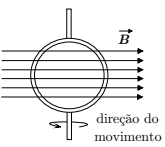
Quando precisar use os seguintes valores para as constantes:
Aceleração local da gravidade g = 10 m/s2 .
Constante gravitacional universal G = 6,67×10−11 m3 .kg−1.s−2 .
Velocidade da luz no vácuo c = 3,0×108 m/s.
Constante de Planck reduzida h = 1,05×10−34 J.s.
Permeabilidade magnética do vácuo µ0 = 4π×10−7 N.A−2 .
Carga elétrica elementar e = 1,6×10−19C.
Massa do elétron m0 = 9,1×10−31 kg.
Constante eletrostática do vácuo K0 = 9,0×109 N.m2.C-2.
 como função da coordenada radial r a partir do eixo de simetria do sistema?
como função da coordenada radial r a partir do eixo de simetria do sistema? Quando precisar use os seguintes valores para as constantes:
Aceleração local da gravidade g = 10 m/s2 .
Constante gravitacional universal G = 6,67×10−11 m3 .kg−1.s−2 .
Velocidade da luz no vácuo c = 3,0×108 m/s.
Constante de Planck reduzida h = 1,05×10−34 J.s.
Permeabilidade magnética do vácuo µ0 = 4π×10−7 N.A−2 .
Carga elétrica elementar e = 1,6×10−19C.
Massa do elétron m0 = 9,1×10−31 kg.
Constante eletrostática do vácuo K0 = 9,0×109 N.m2.C-2.
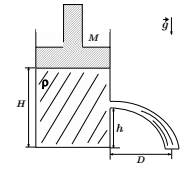
Quando precisar use os seguintes valores para as constantes:
Aceleração local da gravidade g = 10 m/s2 .
Constante gravitacional universal G = 6,67×10−11 m3 .kg−1.s−2 .
Velocidade da luz no vácuo c = 3,0×108 m/s.
Constante de Planck reduzida h = 1,05×10−34 J.s.
Permeabilidade magnética do vácuo µ0 = 4π×10−7 N.A−2 .
Carga elétrica elementar e = 1,6×10−19C.
Massa do elétron m0 = 9,1×10−31 kg.
Constante eletrostática do vácuo K0 = 9,0×109 N.m2.C-2.
